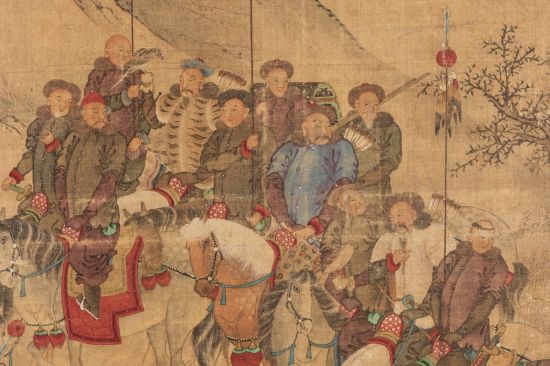From today, exhibited at the National Palace Museum of Korea
Magnificent arithmetic expression, elaborate character description, high quality royal style
“The most artistic perfection among the horror islands ever known”

Joseon was heavily damaged by Jeong Myo Horan (1627) and Byeongja Horan (1636). Qing was the object of hatred and rejection. However, in the late 18th century, with a large influx of their civilizations, interest in new cultures began. A representative example is Horyeomdo (胡獵圖), which means a painting by an orangcae. It depicts the hunting scene of Emperor Qing, and the production was accelerated in conjunction with the military policy of King Jeongjo (1752-1800), which emphasized the movie (武備).
The Cultural Heritage Administration and the Overseas Cultural Heritage Foundation unveiled the’Horyeodo Palpok Screen (胡獵圖 八幅屛風)’ purchased at an auction in the United States last September at the National Palace Museum of Korea. It is a folding screen with a length of 392 cm and a height of 154.7 cm, connecting the eight widths of the silk base. The arithmetic expression and screen composition are excellent, and the figures and animals are vividly depicted.

Jeong Byeong-mo, a professor of cultural assets at Gyeongju University, explained, “This is a scene of the Qing Emperor’s autumn hunting, and has the highest artistic completion among the horror islands known so far.” He said, “Kim Hong-do portrayed exotic painting subjects and characters in the Joseon Dynasty’s landscape expressions,” he said. “It is in line with the attitude of accepting King Jeongjo vs. foreign cultures to preserve self-esteem in the North Korean policy.”
The first and second widths have landscapes with a light autumn atmosphere. The third volume contains the imperial women walking on the road in a gorgeous kiln, and the fifth volume contains the emperor Qing in costumes with a white dragon on a blue background, and horsemen in various postures. In the 7th and 8th widths, hunters aiming bows at tigers and deer or wielding spears and weapons are dynamically depicted. Professor Jeong added, “It is a rhythmic way of developing that starts with the majestic mountain on the right and continues to the plain on the left.”

The first painter who painted Horyeomdo was passed down to Kim Hong-do, but his work remains only as a record in the’Executive Economic Journal (林園經濟志)’. Most of the currently remaining horryeodo screens in Korea were painted as folk paintings. However, the newly released Horyudo Island shows a high-quality royal style in the magnificent expression of landscapes and elaborate portraits.
The Cultural Heritage Administration said, “It is a work that gives a glimpse into the beginning of Joseon’s Horyukdo Island, so the meaning of this exchange is unique.” He said, “We will expand the extension of the study of Horyukdo Island, which was the center of folk paintings, and use it widely in exhibitions and education.”
Reporter Lee Jong-gil [email protected]
